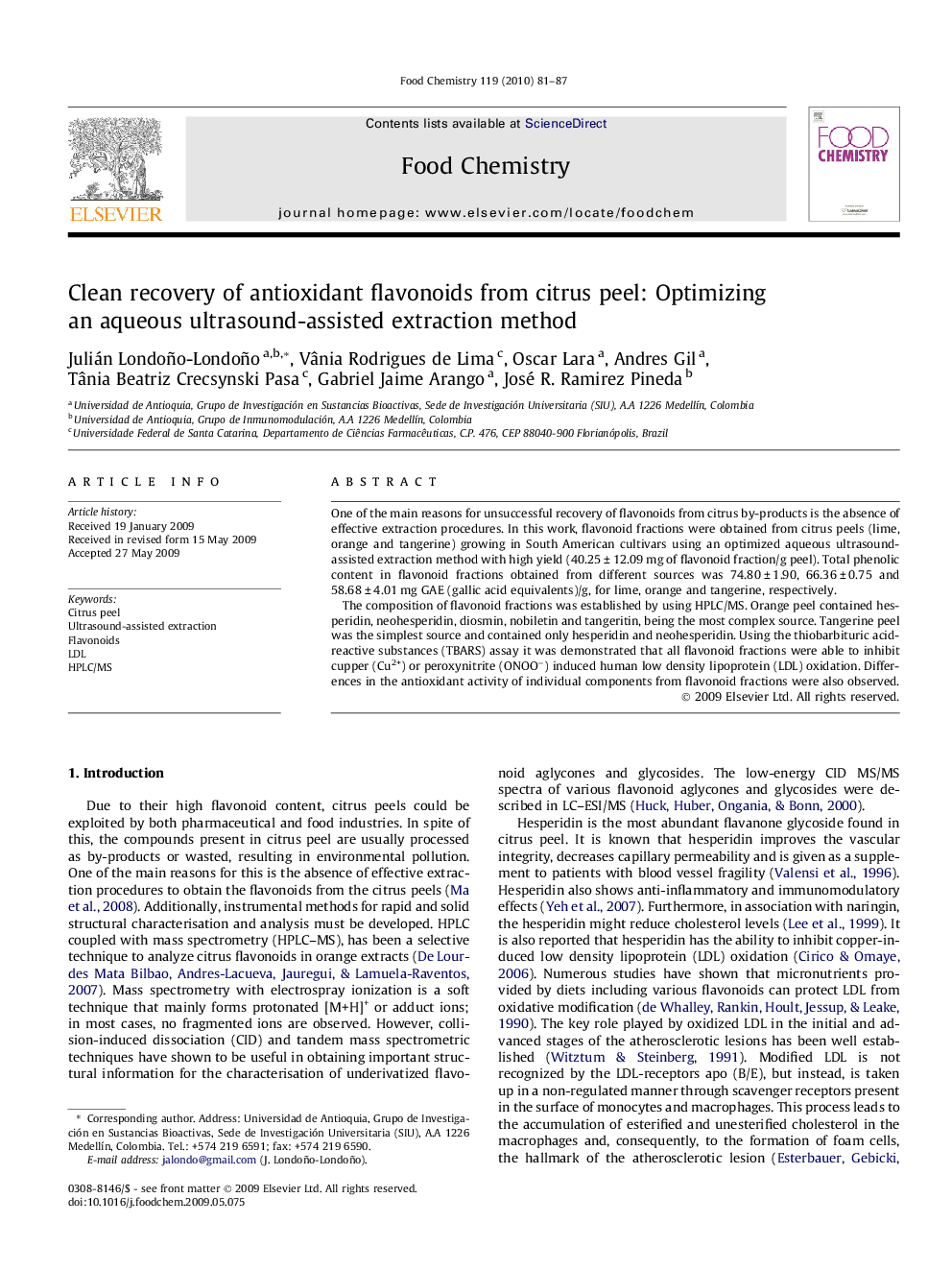| Article ID | Journal | Published Year | Pages | File Type |
|---|---|---|---|---|
| 1186755 | Food Chemistry | 2010 | 7 Pages |
One of the main reasons for unsuccessful recovery of flavonoids from citrus by-products is the absence of effective extraction procedures. In this work, flavonoid fractions were obtained from citrus peels (lime, orange and tangerine) growing in South American cultivars using an optimized aqueous ultrasound-assisted extraction method with high yield (40.25 ± 12.09 mg of flavonoid fraction/g peel). Total phenolic content in flavonoid fractions obtained from different sources was 74.80 ± 1.90, 66.36 ± 0.75 and 58.68 ± 4.01 mg GAE (gallic acid equivalents)/g, for lime, orange and tangerine, respectively.The composition of flavonoid fractions was established by using HPLC/MS. Orange peel contained hesperidin, neohesperidin, diosmin, nobiletin and tangeritin, being the most complex source. Tangerine peel was the simplest source and contained only hesperidin and neohesperidin. Using the thiobarbituric acid-reactive substances (TBARS) assay it was demonstrated that all flavonoid fractions were able to inhibit cupper (Cu2+) or peroxynitrite (ONOO−) induced human low density lipoprotein (LDL) oxidation. Differences in the antioxidant activity of individual components from flavonoid fractions were also observed.
